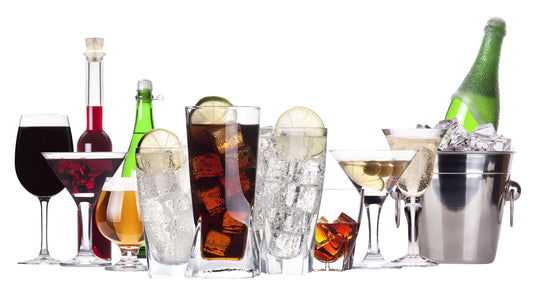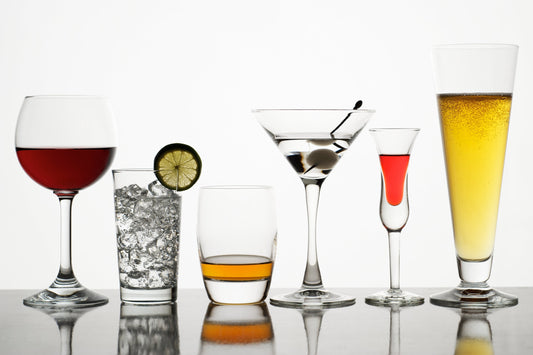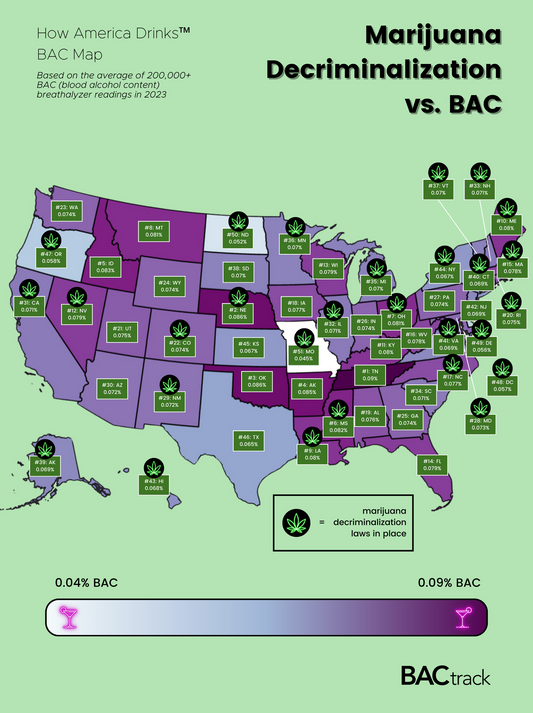BACtrack Breathalyzers: The Science Behind Hangovers
BACtrack Breathalyzers: The Science Behind Hangovers
Admit it--you’ve been there before. The pulsing headache. The sweaty palms. The queasy, sickening ache in your gut. Before you even get out of bed, the thoughts begin to swim. “What happened? Where am I? What in the name of all things sacred was I THINKING??”
The hangover is the bane of those who enjoy celebrating with alcoholic beverages—and though it might not help you to feel any better while in its nefarious grip, understanding the science behind one might aid prevention in the future. Or at least give you something to think about while you wait for that ibuprofen to kick in.
There are number of ways alcohol causes a hangover. Ever consume just one or two drinks and feel hung over the next day? That’s impurities in the booze, sometimes intentionally added (for flavor or as preservative), other times unintentional (by-products of the fermentation process). Excessive drinking can also cause more urine production, leading to dehydration, which causes headaches and other hangover symptoms.1
But let’s assume you are drinking clean, non-tainted alcoholic beverages and following the one-glass-of-water-per-drink rule. You should be in the clear, right? Not so fast. Even then you can get hungover. The answer comes from taking a deeper look into the process by which the body processes alcohol.
When we drink, alcohol is absorbed by the stomach and small intestine. The body brings it to the liver, where it is metabolized in a two-step process in preparation for elimination via the urine. First, the alcohol is converted into acetaldehyde. Second, the acetaldehyde is converted into acetate. Both alcohol and acetate, the beginning and ending products, are both relatively benign. It’s that in-between substance, acetaldehyde, that’s the killer.
Even in small doses, acetaldehyde is a heck of a toxic substance. When it is not rapidly converted into acetate, which could be simply the result of a sluggish metabolism, the results are simply dreadful: increased heart rate, nausea, headache, a flush face and neck, and persistent, caffeine-repellent drowsiness. Acetaldehyde is one of the major hangover causes.
Approximately half of the Asian population is deficient in the enzyme that turns acetaldehyde into acetate, and therefore may experience this flush, hung over feeling after consuming only one or two standard drinks.2
Want to enjoy alcohol without the hangover? There’s an easy way to do it.
- Drink moderately – one drink per hour
- Drink only on full stomach
- Intersperse glasses of water with each drink
- Use a BACtrack Breathalyzer to monitor your BAC
Making sure your blood alcohol content (BAC) drops to below 0.02% before you hit the sack can dramatically improve your chances of waking up fresh and clear headed. With BACtrack Mobile’s ZeroLine® technology, you even get an estimate of your BAC’s descent to 0.00% with every test. There’s no better, more convenient way to monitor your alcohol consumption and stay hangover free.
References:
- http://chemistry.about.com/od/everydaychemistry/a/hangovers.htm
- The Science of Drinking: How Alcohol Affects your Body and Mind, by Amitava Dasgupta, Rowman & Littlefield, 2011




